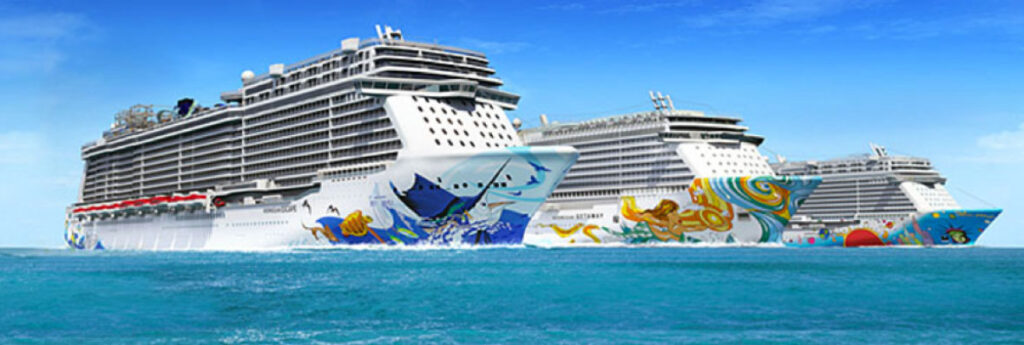On Wednesday morning, Norwegian Cruise Line Holdings Ltd. announced it has successfully secured over US $2 billion of additional liquidity in response to impacts of the COVID- 19 global pandemic on the Company and the cruise industry, including the temporary suspension of voyages, and to safeguard against a further downside scenario.
Contingent on completion of the transactions, the Norwegian expects to have approximately $3.5 billion of liquidity. This significantly strengthens the Company’s financial position and liquidity runway and it now expects to be positioned to withstand well over 12 months of voyage suspensions in a potential downside scenario. While this is not its base case expectation, the Company has taken a swift and proactive approach to protect its future given the significant uncertainty and unknown duration of the COVID-19 global pandemic. When the transactions are completed, the additional liquidity alleviates management’s concern about the Company’s ability to continue as a going concern for the next 12 months.
Norwegian Cruise Line said Tuesday it may have to seek bankruptcy protection, saying there’s “substantial doubt” about its ability to continue as a “going concern” and warned investors it doesn’t have enough money to cover its financial obligations this year.
The original announcement, caused shares to fall about 20 percent on the New York Stock Exchange to just below $12 a share. In February, the shares were worth more than $55 each.
“COVID-19 has had, and is expected to continue to have, a significant impact on our financial condition and operations, which adversely affects our ability to obtain acceptable financing to fund resulting reductions in cash from operations,” the cruise line said, adding that as of April 24, advanced bookings for the remainder of the year were “meaningfully lower than the prior year, with pricing down mid-single digits.”
They also announced that L Catterton, a private equity fund, invested US $400 million in NCL Corp., a subsidiary of Norwegian. Under the agreement, L Catterton will be entitled to nominate one member to the board.
The L Catterton investment is contingent on the company raising at least $1 billion from other investors, and Norwegian hopes to raise another $1.6 billion from issuing a mix of stock and bonds. The smallest of the three major publicly traded cruise companies, said it had roughly US $6 billion in long-term debt obligations as of Dec. 31.
The coronavirus pandemic has brought the global travel industry, and the cruise industry in particular, to a standstill across the world.
In early March, as the virus spread rapidly among some cruise passengers, the State Department warned Americans against cruising. On March 14, the Centers for Disease Control and Prevention issued a no-sail order for cruise ships, extending it on last month to July 24.
“This is the first time that we have completely suspended cruise voyages, and as a result of these unprecedented circumstances, we are not able to predict the full impact of such a suspension on our company,” Norwegian said.
While the company is offering 125% future cruise credits for cancelled cruises, it said, “approximately half of the guests who have had their voyages cancelled and who have contacted us have requested cash refunds.”
“We cannot predict when any of our ships will begin to sail again or when ports will reopen to our ships,” Norwegian said, “Even once travel advisories and restrictions are lifted, demand for cruises may remain weak for a significant length of time and we cannot predict if and when each brand will return to pre-outbreak demand or pricing.”
These announcements certainly do not bode well for any increase in requests for cruise credits over cash.
The company also said it is cutting capital expenditures by $515 million and has furloughed 20% of its shoreside staff.
Cruise ships have been thrown into disarray by the COVID-19 pandemic, as the US Centers for Disease Control and Prevention issued a “no sail” order to all cruise companies in US waters on March 14.
That order was set to expire on April 10, but has since been extended multiple times. Unless there is a further extension, the no sail order is set to expire on July 24. But Norwegian’s dire warnings on Tuesday cast doubt on its ability to stay in business. It has suspended all of its cruises at least until the end of June, and has so far provided no indication of when it could conceivably set sail again.
Just a day earlier however Carnival Corp., the world’s largest cruise operator, which owns 27 ships and transported five million people last year — said it will resume some itineraries and is booking eight cruises scheduled to leave from Texas and Florida in August 2020, bound for destinations in the Caribbean and Mexico.
“We continue to engage with the CDC and government officials at a variety of levels about new protocols we would implement prior to a return to sailing,” Carnival said. “We will also be in discussions with officials in the destinations we visit.”
The company has already said it can last through 2020 with no revenue from cruises.
Royal Caribbean, the world’s second-largest cruise operator, has yet to make any public announcements about when it may return to service.
The three major cruise companies are incorporated outside the US and were left out of a $2.3-trillion US stimulus package for troubled companies.

